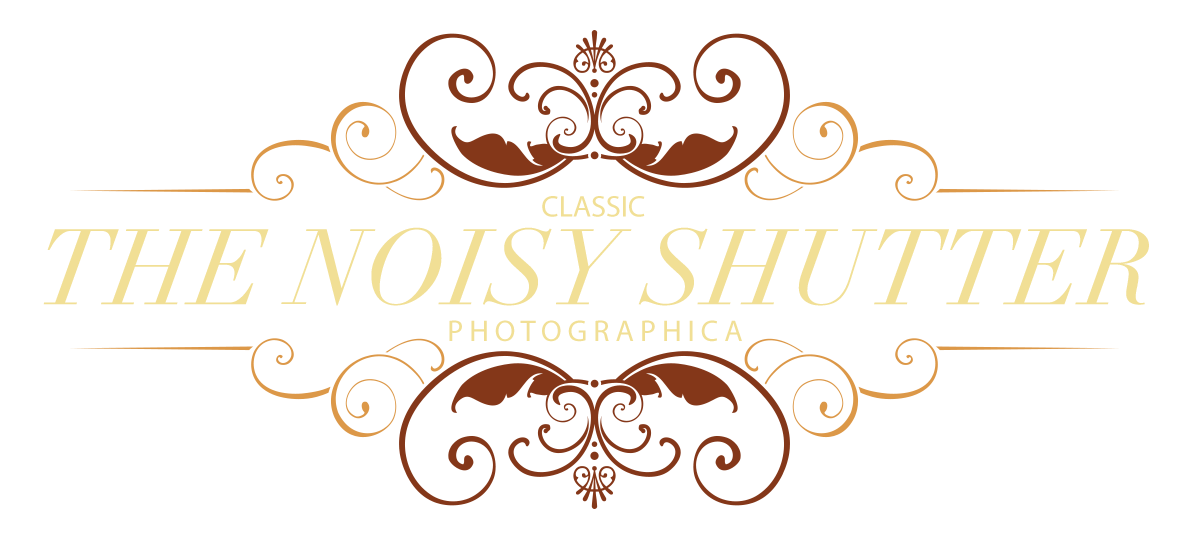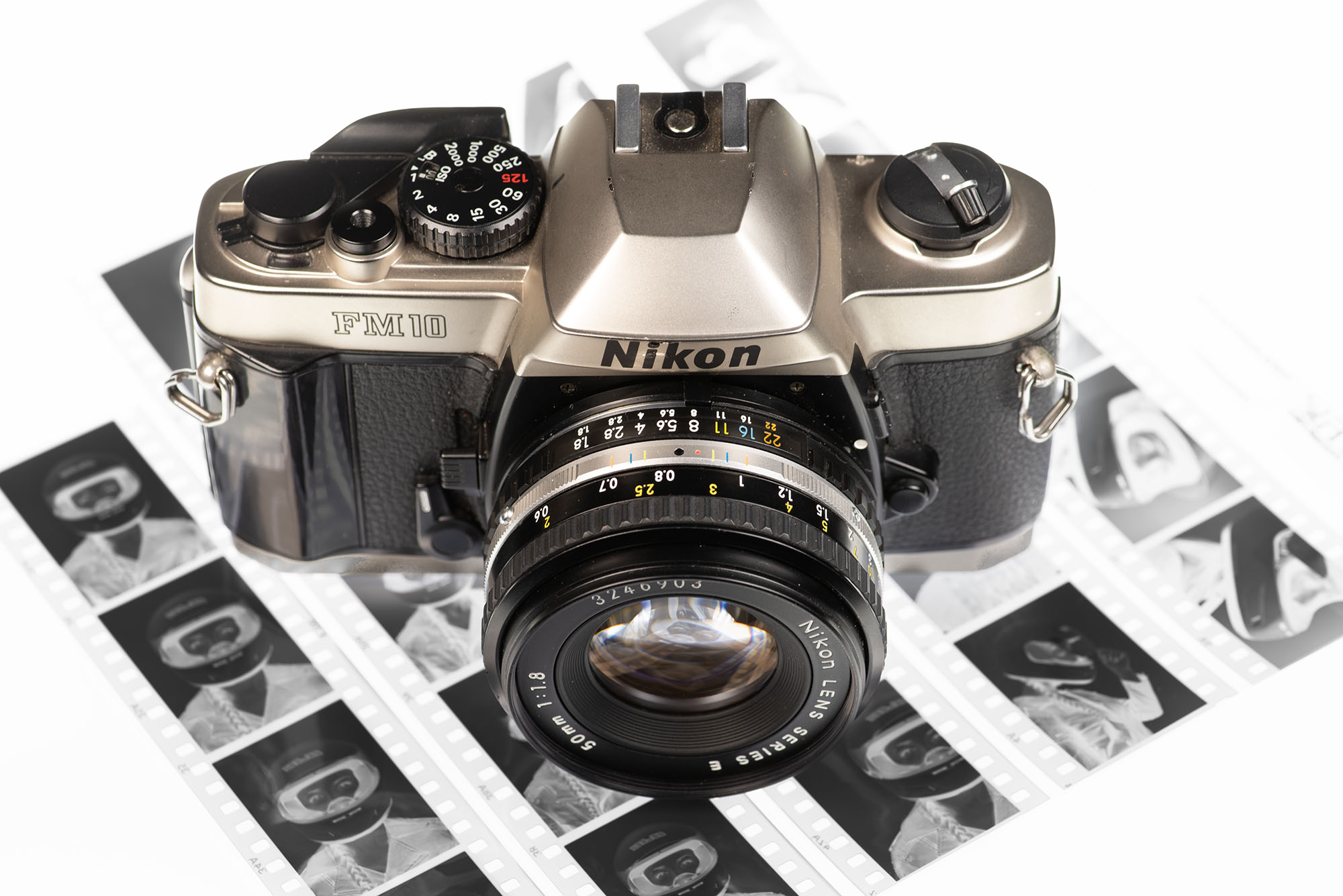Upon holding this camera for the first time, I remember thinking, “That is really lightweight for a Nikon”. Some traits or characteristics can be either advantages or disadvantages, depending on the circumstances. I had a college roommate that stood 7’ 4” (223cm), and while he would be an obvious choice for a basketball team, he would passed over as a candidate for fighter pilot training.
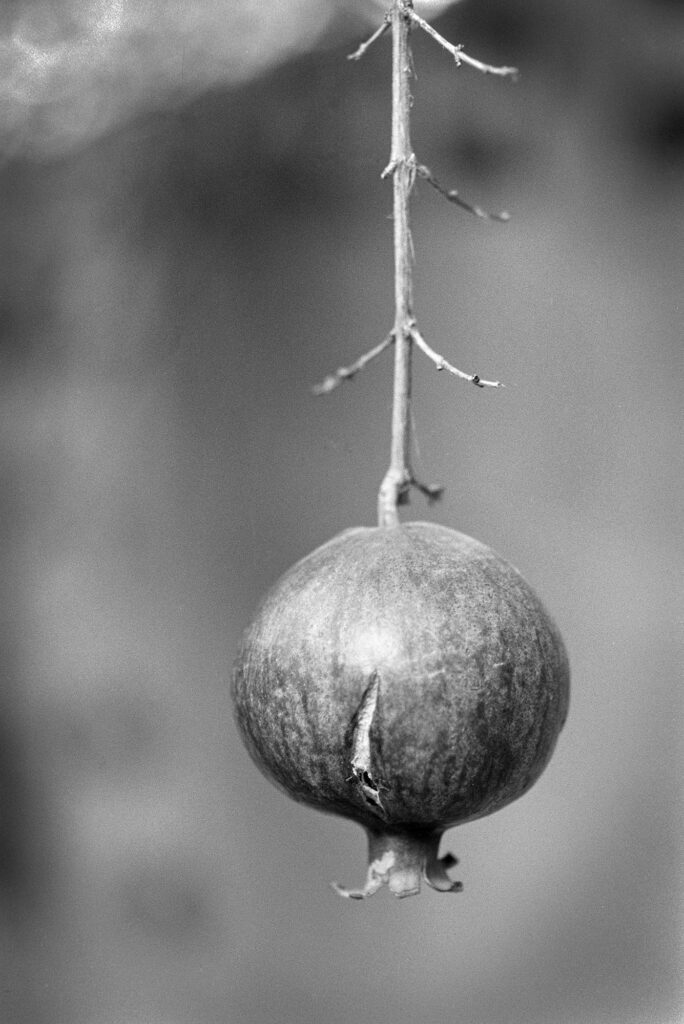
Nikon’s FM10 is only a Nikon in name, as it was manufactured by Cosina. Based on a Cosina design, it shared other branding as well. True Nikon fanboys will scoff at the FM10, and I suppose I understand why. Sitting next to my Nikkormat Ftn, Nikon F, F2, F3, and FM2, it gets a little self-conscious. Plastic dominates its construction externally but it has a metal chassis. Finished in champagne gold, it differs from its cousins in chrome and black.

Despite being a lightweight in a line of heavyweights, it has the heart of a warrior. I am referring to its mechanical shutter. The Copal square shutter is legendary for its reliability and accuracy. When I went snowshoeing in the mountains with my son a few years ago, I brought the FM2 because I knew its Copal shutter would work in cold temperatures. I would have no reluctance to bring the FM10, and its lightweight construction would be an advantage. With a compact lens like the 50/2 or 50/1.8, it is a joy to carry around.
Released in 1995, the FM10 was perhaps an attempt to capitalize on the resounding success of the FM series. However, it was less expensive and clearly aimed at the enthusiast market segment. Much like the Nikon EM, FG, FG-20 and Nikkormat series, the FM10 was a budget-friendly gateway into using Nikkor lenses.

While intended for the budget-conscious enthusiast, it is not devoid of useful features. Across the front we find the strap lugs, self-timer (about 9 seconds), a depth-of-field preview lever, an exposure measurement button and the lens release button. Nothing complicated there.
Across the top, left to right, we have the film rewind lever, a simple hot shoe, shutter speed dial with film ISO dial inset, the shutter release, film advance lever, frame counter, and multiple exposure switch. The back has a film cartridge viewing window, and the bottom has only the battery compartment, tripod bushing, and film release button. Everything is in the right place, and it is remarkably user-friendly.
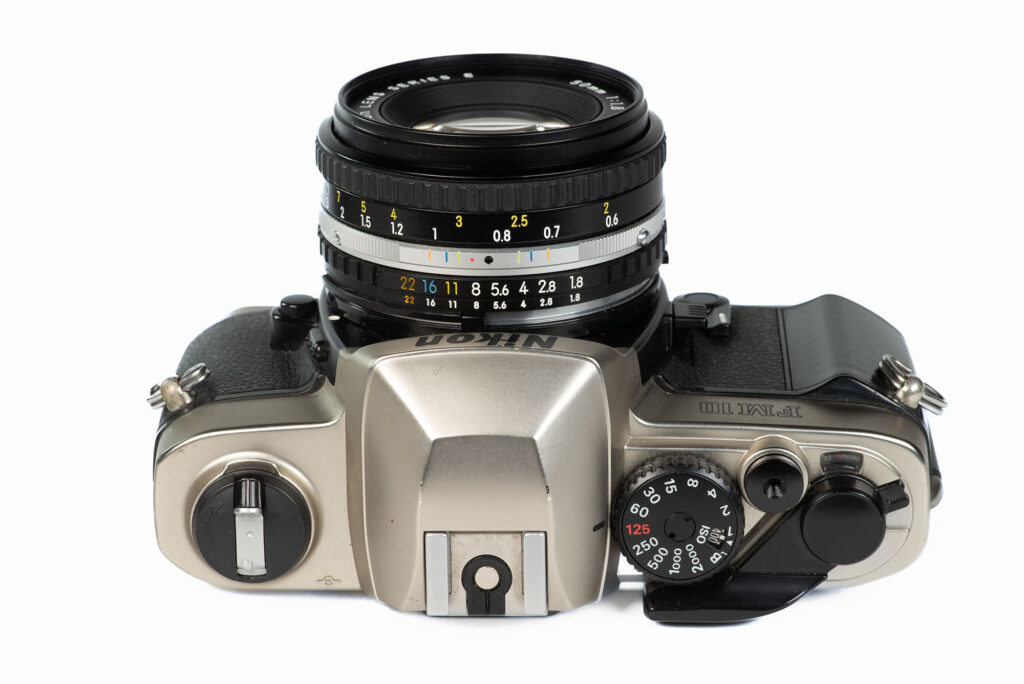
Two common button batteries (LR44, EPX76, etc.) run the meter, but the shutter is mechanical and not dependent on batteries. The meter is quite simple, with LED indicators for over and under in red, and a green circle for correct exposure. Exposure details such as aperture and shutter speed are not visible in the viewfinder. Some may find the viewfinder information lacking, while others may enjoy the uncluttered view.
The shutter has speeds from 1 second to 1/2000, in addition to the Bulb setting. For the sake of reference, a shutter speed of 1/2000 allows for using an aperture of f4 with ISO 100 film in bright daylight. It is also fast enough to freeze action and avoid motion blur in many scenarios. Flash synchronizes at 1/125, which is faster than the F3’s 1/60 but slower than the FM2’s 1/250.

There is no mystery to the loading and other fundamental operations of the camera. One quirk worth noting, it can be called such, is that the shutter button is locked when the advance lever is pushed all the way in. It shares this characteristic with the FM and FM2. I find it mildly annoying, and it is simply something requiring adaptation.
The only other oddity, and this may be just personal, is the protruding rewind lever. Many cameras have a lever that sits flush or nearly flush with the round housing. This one is quite prominent, to the point of possibly snagging on clothing or a bag’s interior. I found it a bit unseemly at first, but the first time I rewound the film, I discovered its purpose. The design allows the lever to unfold into a higher-than-typical position, making it remarkably easy to rewind the film.
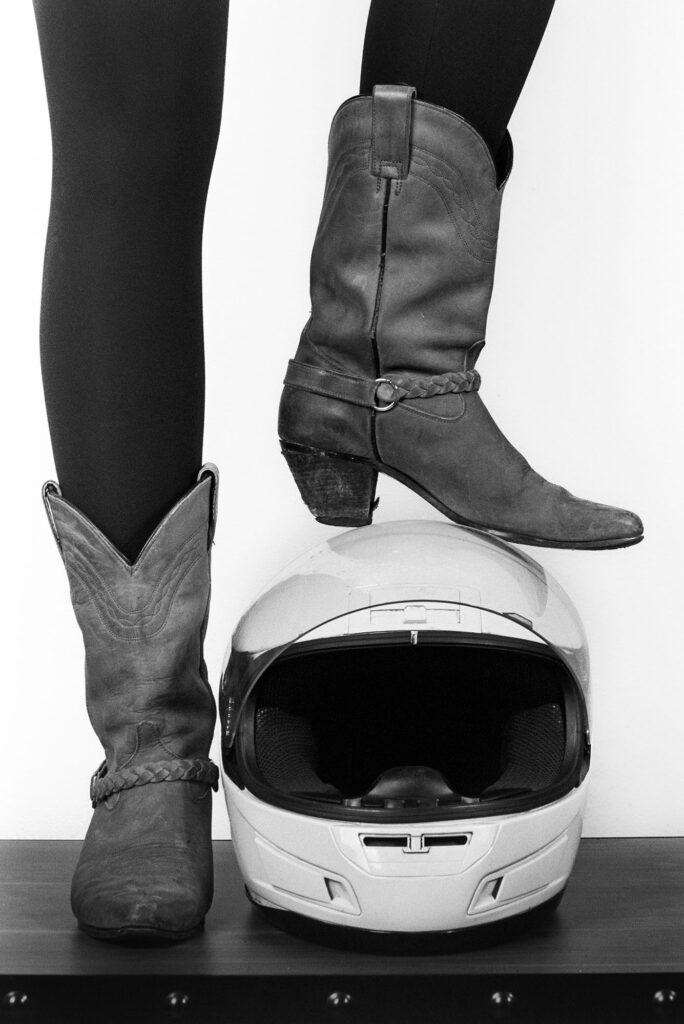
I can’t tell you if you’re going to enjoy this camera. In fact, I wasn’t sure I was going to enjoy it. But, I do. A portrait session seemed to be a good test to judge its handling in a fast-paced dynamic environment. I found that it generated less fatigue than a heavier camera, and that comes as no surprise. I also found the screen to be adequately bright, with focusing easy due to the split image screen.

Controls are placed in locations familiar to anybody who has used SLRs. There was no faffing about, searching for the right button or lever. Shutter release is smooth and generates little vibration. The shutter button is convex and feels like it already has a soft release installed. It is also threaded for a cable release if such a need arises. The sound of a Copal square shutter is the sound of fun.
Nikon’s FM10 enjoyed a moment in the sun back in February 2019 when a celebrity was spotted with one in her hand. Some were surprised that this celebrity could likely afford any camera she wanted but still found this “entry level” budget SLR good enough for her. Why not? It is lightweight, simple to use and reliable. Coupled with Nikkor lenses, it is a convenient and capable package.
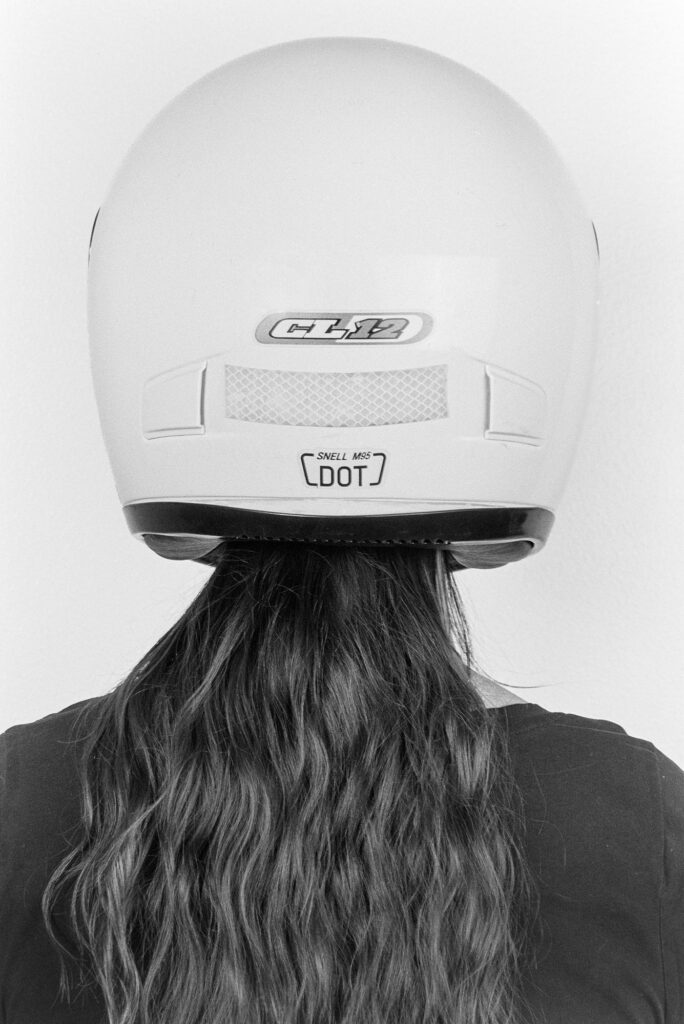
Specs:
Designation: Nikon FM10 35mm SLR
Introduced: 1995
Manufactured: Japan
Weight: 417g (14.7oz)
Shutter: Vertical metal focal plane, mechanical
Shutter Speed range: 1-1/2000 second plus bulb
Flash Sync: 1/125 second
ASA range: 25-3200
Hot shoe: Yes
Meter: LED under/over indicator, center-weighted TTL
Battery: 2 x LR44 1.5v batteries (or equivalent)
Self-Timer: Yes
DOF Preview: Yes
Mirror lockup: No
Viewfinder: 92% coverage, 0.84x
